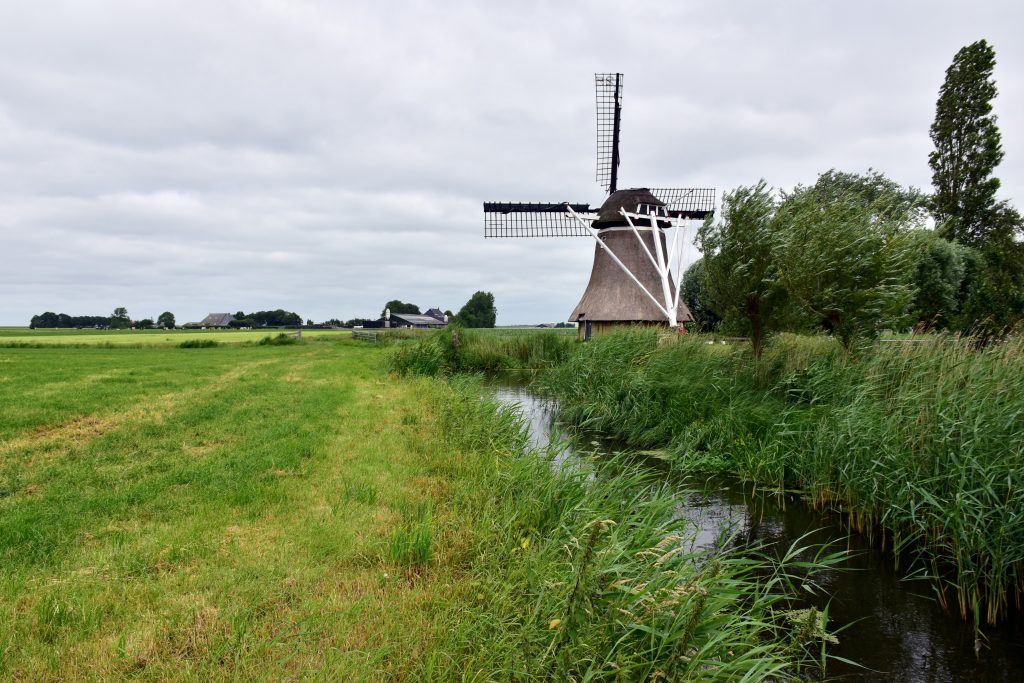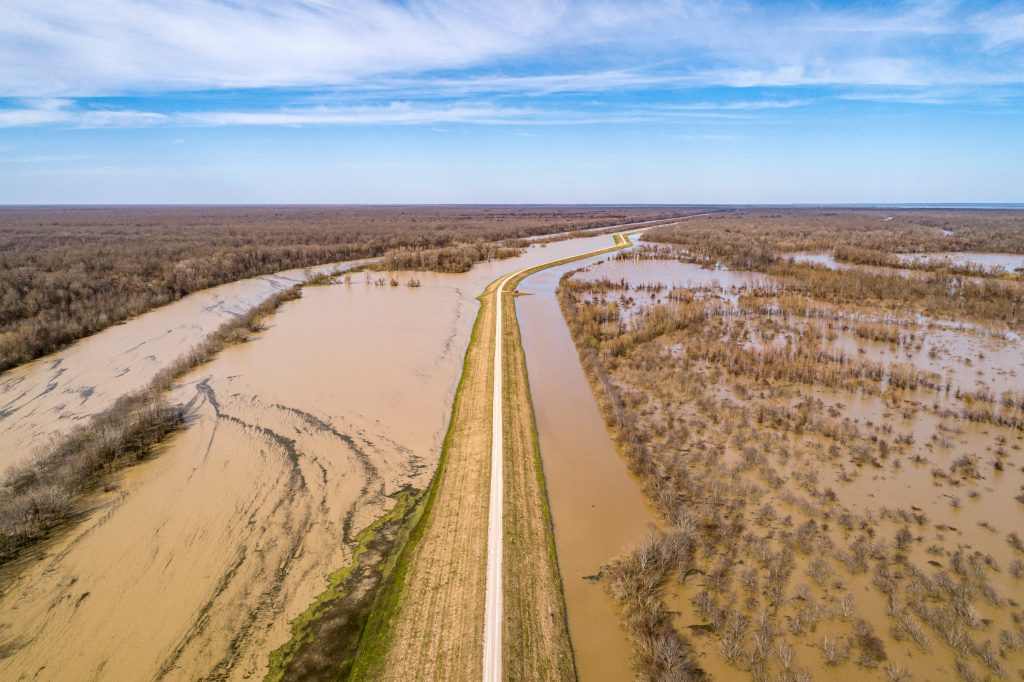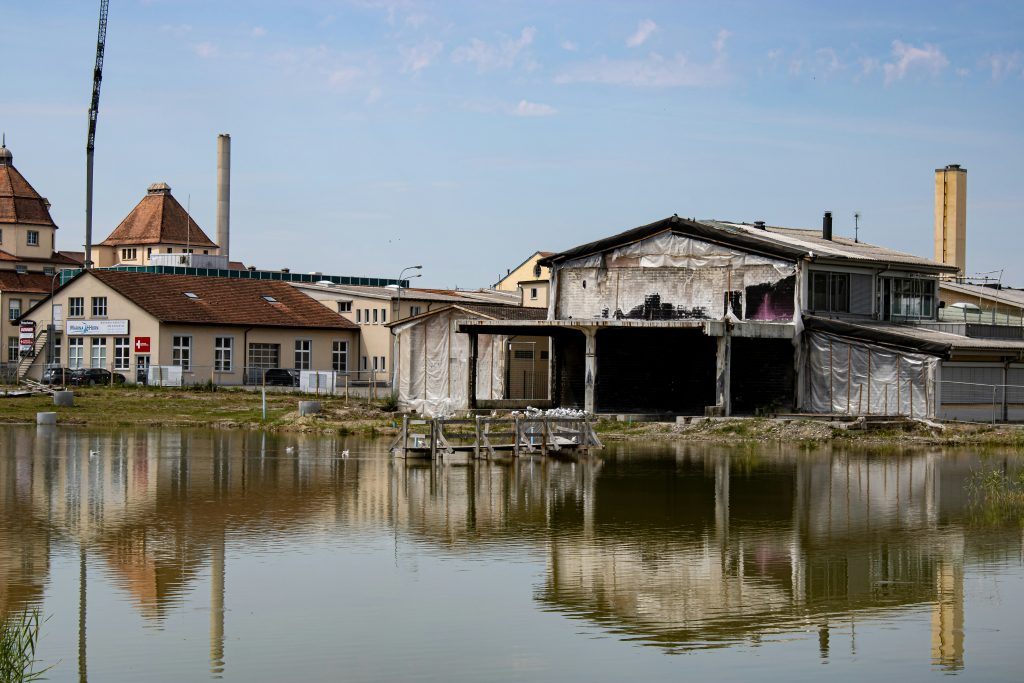Sustainable Drainage Systems: Combating Erosion and Preserving Natural Waterways

By: By: Emily Newton
Erosion is a natural process, but when accelerated by climate change, it can lead to severe environmental problems. Sustainable drainage systems (SuDS) have emerged as a practical solution to mitigate the budding exigency of rampant erosion.
What Are Sustainable Drainage Systems?
SuDS are a set of eco-friendly approaches to managing drainage in and around properties during heavy or prolonged rainfall. These systems capture and hold the excess surface water so it slowly soaks into the ground or through vegetation. Slowing the runoff down in this manner mimics the natural drainage process of rainwater in areas not covered in concrete, tarmac, or other non-permeable surfaces.
As environmental disaster threats escalate, the need for sustainable drainage systems and other nature-based alternatives to conventional drainage will likely increase. Excess surface runoff can cause widespread devastation in urban areas, breeding mosquitoes and stinking up the place.
The U.K. government has already made the implementation of SuDS mandatory for new constructions starting in 2024. Other countries will likely follow suit, especially since SuDS ties into Objectives 11 and 13 of the U.N. Sustainable Development Goals to tackle the climate crisis.
Components of SuDS
Three primary elements make SuDS a viable solution for combating flooding and erosion in city development.
- Drainage: This aspect involves collecting rainwater safely and channelling it from waterways and other sensitive areas. The system then stores the water until it can be absorbed naturally or repurposed.
- Pollution control: This component prevents rainwater from pooling in one spot or leaking into underground reservoirs and pipelines.
- Nature-based prevention involves working with vegetation that naturally slows down runoff before reaching nearby waterways and stream banks.
How Do SuDS Differ From Traditional Drainage Systems?
The conventional method of tackling erosion and flooding involves quickly draining surface water directly into underground pipe drainage systems. This approach relies on infrastructure like maintenance holes, catch basins and trench drain systems to collect rainwater.
However, this method isn’t enough, especially in the face of rapid urbanization and human-driven climate change. For one, it mainly focuses on getting the water off the streets with little consideration of its impact on biodiversity and increased potential for water source pollution.
This is where sustainable drainage systems stand out. These techniques look at how much surface water must be removed and how it may be used to enhance an area. They also consider the challenges of runoff and its role in worsening environmental degradation.
Ultimately, installing SuDS aligns with the viewpoint that rainwater runoff is not some nuisance to channel away as quickly as possible. It is a resource that can be controlled to prevent pollution and maintain biodiversity integrity.
Nipping the Budding Calamity That is Erosion

https://unsplash.com/photos/green-grass-field-under-blue-sky-during-daytime-bGuTCF7QRa4
Tackling soil erosion is critical to environmental stewardship, especially given the rising frequency of extreme weather events. Conventional control methods typically involve complex structures like concrete walls, which are costly to install and can contribute to even more erosion during prolonged rainfall.
Sustainable erosion control is critical to several important humanitarian and environmental goals.
Preserving Soil Quality
Soil provides the foundation for food production and natural ecosystems. However, rampant erosion strips away the upper layer of soil, which is rich in nutrients and essential for agricultural processes. This catastrophe has far-reaching implications.
Scientists estimate that topsoil loss occurs ten times faster than nature can replenish it. At this rate, all the world’s topsoil could be washed away over the next 60 years. Diminished fertile land threatens food production when demand rises dramatically.
Protecting Water Quality
Runoff contains sediments and pollutants, which mix into freshwater sources like rivers and lakes if not properly absorbed in the ground. This pollution degrades water quality and harms aquatic life, underscoring the need for proper control methods. Such degradation impacts wildlife and human communities downstream, who rely on these sources for drinking and agriculture.
Conserving Natural Habitats
Erosion can disrupt and destroy biodiversity in its path, threatening the survival of various ecosystems. One particularly colossal concern is eutrophication — the excessive richness of nutrients in a water body due to runoff. This creates an overabundance of algae and plants that compete for oxygen, effectively killing off sea life and reducing coastal habitats.
More worrying is the fact that eutrophication is progressing rapidly. Recent data shows these excessive nutrient inputs have already degraded 65% of the estuaries and coastal waters across the contiguous U.S. Mitigation measures help protect these delicate ecological environments and conserve the natural habitats of different plant and animal species.
Minimizing Infrastructure Damage

Sustained erosion increases the risks of flooding and subsidence, damaging buildings, roads and other structures, resulting in safety hazards and costly repairs. The U.S. East Coast is particularly exposed to these dangers. Several communities, including Norfolk, Virginia Beach, New York and Baltimore, are seeing over 60% of their land area sink due to subsidence and coastal flooding.
Erosion remains one of the biggest causes of these disasters, threatening critical infrastructures’ structural integrity, such as roads, railways, and airports. By implementing control practices, city governments can avert the cataclysms that are just waiting to happen.
How Do SuDS Complement Erosion Control Measures?
Sustainable drainage systems have proven to be a powerful tool in combating erosion, offering several benefits.
Reduced Runoff
By capturing and slowing down rainwater runoff, SuDS decrease the volume of water that can cause widespread flooding. These systems essentially protect topsoils from nutrient loss and mitigate other harmful effects of erosion by facilitating the natural absorption of water during and after heavy storms.
Soil Stabilization
SuDS typically rely on certain trees and shrubs to stabilize soil and absorb excess stormwater. These plants’ strong, deep roots anchor the soil, preventing the top layer from washing away during heavy rains. Engineering solutions like soil nailing can also complement SuDS by providing slope stabilization that reduces erosion.
Improved Water Quality
SuDS filters pollutants from runoff before reaching water sources, protecting marine ecosystems. These systems can also help recharge groundwater supplies by capturing and reusing stormwater.
Climate Resilience
Incorporating native plants in SuDS fosters biodiversity and improves natural ecosystems. Furthermore, the vegetation involved in these systems can minimize a city’s carbon footprint by capturing and storing greenhouse gases, thereby improving air quality. Green spaces in urban areas can also help combat the effects of heat islands by providing shade and regulating building temperature.
Flood Risk Reduction
SuDS relieve the pressure on conventional drainage systems, which are already struggling during heavy rainfall. By providing another avenue for controlling runoff, these SuDS help minimize the risk of flooding and safeguard infrastructure.
Examples of SuDs in Erosion Control
There are several types of sustainable drainage systems, each with unique benefits and contributions to erosion control. Common examples include:
- Permeable surfaces: SuDs rely on porous surfaces like gravel and grass pavers to facilitate improved water infiltration into the ground.
- Green roofs: Rooftops wholly or partially covered with vegetation are also an eco-friendly drainage system. During summer, green roofs can retain 70%- 90% of runoff.
- Marshes and wetlands: Shallow ditches or channels can direct and store runoff, allowing natural filtration and preventing pollution.
- Rainwater harvesting: Installing rainwater capture systems effectively reduces the runoff into sewers and makes the resource available for repurposing.
- Infiltration basins: These are engineered sump or percolation ponds that temporarily hold water and prevent downstream erosion during heavy rainfall.
The Time to Act Is Now
Soil erosion and flooded waterways threaten human and animal survival at the most basic level. Losing the foundation of food systems, clean water sources, and natural habitats is a crisis the planet cannot afford.
Installing SuDS and related green infrastructure is crucial for achieving a sustainable future where the risks of erosion and water pollution are minimized. Policymakers must look into incorporating these solutions into their urban development planning to supplement existing drainage systems and achieve sustainability goals.
________________________________
Emily Newton is the Editor-in-chief of revolutionized
emily@revolutionized.com.



